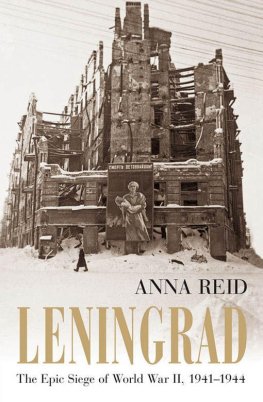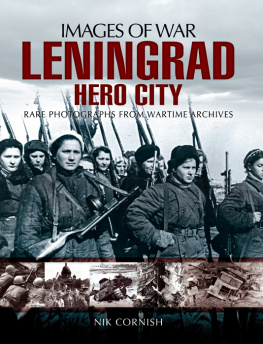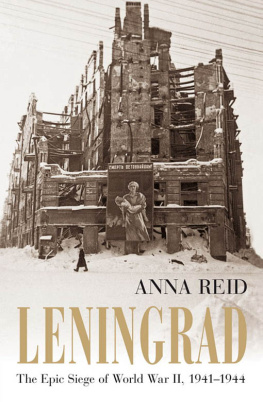SAVING
STALINS
IMPERIAL
CITY

This book is a publication of
INDIANA UNIVERSITY PRESS
Office of Scholarly Publishing
Herman B Wells Library 350
1320 East 10th Street
Bloomington, Indiana 47405 USA
iupress.indiana.edu
Telephone 800-842-6796
Fax 812-855-7931
2015 by Steven M. Maddox
All rights reserved
No part of this book may be reproduced or utilized in any form or by any means, electronic or mechanical, including photocopying and recording, or by any information storage and retrieval system, without permission in writing from the publisher. The Association of American University Presses Resolution on Permissions constitutes the only exception to this prohibition.
 The paper used in this publication meets the minimum requirements of the American National Standard for Information Sciences- Permanence of Paper for Printed Library Materials, ANSI Z39.481992.
The paper used in this publication meets the minimum requirements of the American National Standard for Information Sciences- Permanence of Paper for Printed Library Materials, ANSI Z39.481992.
Manufactured in the United States of America
Library of Congress
Cataloging-in-Publication Data
Maddox, Steven, [date]
Saving Stalins imperial city : historic preservation in Leningrad, 19301950 / Steven Maddox.
pages cm
Includes bibliographical references and index.
ISBN 978-0-253-01484-9 (hardcover : alkaline paper) isbn 978-0-253-01489-4 (ebook) 1. Historic preservation Russia (Federation) Saint Petersburg History 20th century. 2. Historic buildings Conservation and restoration Russia (Federation) Saint Petersburg History 20th century. 3. Monuments Conservation and restoration Russia (Federation) Saint Petersburg History 20th century. 4. Architecture Conservation and restoration Russia (Federation) Saint Petersburg History 20th century. 5. City planning Russia (Federation) Saint Petersburg History 20th century. 6. Saint Petersburg (Russia) Buildings, structures, etc. 7. Saint Petersburg (Russia) History Siege, 1941-1944.
8. Memorials Russia (Federation) Saint Petersburg History 20th century. 9. Historic preservation Government policy Soviet Union History. 10. Soviet Union Cultural policy. I. Title.
DK573.M33 2015
363.6'909472109043 dc23
2014017906
1 2 3 4 5 20 19 18 17 16 15
TO GILLIAN AND CLARKE
CONTENTS
ACKNOWLEDGMENTS
This book could not have been written were it not for the continuous support I received from family, friends, and colleagues over the years. The project began at the University of Toronto. There I was fortunate to be among a wonderful cohort of graduate students. Many of them read parts of this book and provided valuable feedback. I would particularly like to thank Sarah Amato, Ariel Beaujot, Wilson Bell, Auri Berg, Max Bergholz, Heather DeHaan, Sveta Frunchak, Geoff Hamm, Janet Hyer, Tomaz Jardim, Alex Melnyk, Tracy McDonald, and Nathan Smith for their help and encouragement. I was also surrounded by an incredible group of mentors at Toronto, including Bob Johnson, Thomas Lahusen, Peter and Susan Solomon, Alison Smith, and Lynne Viola. Many thanks to Bob for our long conversations on history, fishing, and teaching. His encouragement and support have meant a lot over the years. Lynne Viola has been a model supervisor, colleague, and friend. I cannot thank her enough for the support and advice she generously offered me as a student and now as a professor. Spasibo tebe, Lynne!
Many others have left their imprint on this book. Peter Aterman, Richard Bidlack, Maya Haber, David Hoffmann, Andy Janco, Catriona Kelly, Lisa Kirschenbaum, Ben Loring, Brigid OKeeffe, and Serhy Yekelchyk read individual chapters and provided excellent feedback along the way. David Brandenberger, Steve Norris, and Karl Qualls have always been available to read and comment on drafts (often with very short notice). Sean Guillory, Christoph Gumb, Jeff Hass, Jenny Kaminer, Nikita Lomagin, Matt Lenoe, Oscar Sanchez, and Andrew Sloin all discussed my arguments with me and offered insightful comments. I value not only their help with the book, but even more their friendship and good humor. I rarely get to see these people, so it is with great excitement and anticipation that I look forward to our annual get-togethers at the ASEEES! I am especially indebted to Ryan Gingeras and Mike Westren. They have been true friends since we met in graduate school and both have helped shape this book in more ways than they realize.
Friends and colleagues at Canisius College, my academic home since 2009, have been extraordinarily supportive as I revised the book for publication. Tom Banchich, Dave Costello, Dave Devereux, Julie Gibert, Rene de la Pedraja, Larry Jones, and Nancy Rosenbloom read and offered constructive criticism on chapters, while Matt Mitchell read the entire draft. Many thanks to them for their help. Thanks are also due to all other members of the History DepartmentRichard Bailey, Keith Burich, and Bruce Dierenfieldfor their support over the years.
While doing research in Russia, I was fortunate to have support from a wonderful group of friends, most of whom I have known since my undergraduate trips in the 1990s. The Efimovs (Tania, Dima, and Sasha) have been like a family to me ever since I lived with them in Cheboksary for six weeks in 1997. It is hard to explain how much I learned from them, and to express how thankful I am for their friendship. Maya Efimova, likewise, did everything possible to make me feel at home in Moscow. Many thanks to her for putting a roof over my head whenever I came to town. Pavel and Viktoria Shpilevsky provided accommodations when necessary in St. Petersburg, while Sergei Antonov, Edik Kudriavtsev, Sasha Pirogov, and Vlad Smirnov have always offered good cheer and their most sincere friendship to this kanadets. I cannot thank them enough for all they have done for me over the years.
My research in Russia has been generously funded by grants from the Social Sciences and Humanities Research Council of Canada, the University of Toronto, and Canisius College. I would like to thank the dedicated staff at the Russian archives and libraries I worked in. Three people in particular were incredibly generous with their time, expertise, collegiality, and friendship. Iulia Iurevna Bakhareva at the Archive of the Committee for State Control, Use, and Preservation of Monuments of History and Culture of St. Petersburg (KGIOP) took a special interest in my project when we first met in 2005, and has offered generous support and advice ever since. Vera Igorevna Popova at the former St. Petersburg Party Archive (TsGAIPD), too, never hesitated to help this Canadian jump the hurdles of Russian archive bureaucracy. At TsGAIPD Taisa Pavlovna Bondarevskaia insisted that I have lunch in her office every day, offered help whenever it seemed getting access to documents would be problematic, and proved to be a true friend to me and my wife during our year-long stay in Petersburg. Sadly, Taisa Pavlovna did not live to see the completed project. She will forever be in my thoughts.
I would like to extend my gratitude to my editors at Indiana University Press. The project began with Janet Rabinowitch and was then passed on to Bob Sloan when she retired. It has been a pleasure to work with both of them. Many thanks to Jenna Whittaker, June Silay, and Nancy Lightfoot for answering the several thousand questions I had, and to my copyeditor, Eric Levy, for his keen eye and constructive suggestions.











 The paper used in this publication meets the minimum requirements of the American National Standard for Information Sciences- Permanence of Paper for Printed Library Materials, ANSI Z39.481992.
The paper used in this publication meets the minimum requirements of the American National Standard for Information Sciences- Permanence of Paper for Printed Library Materials, ANSI Z39.481992.